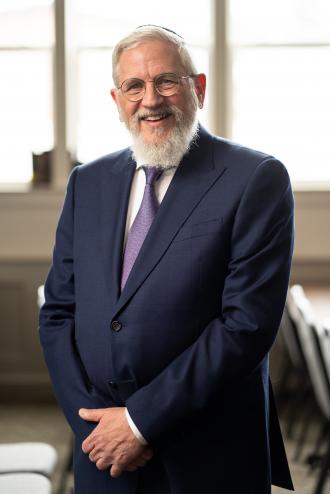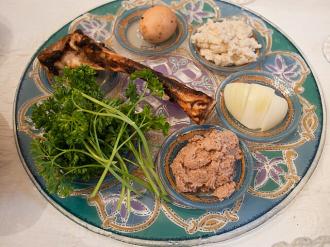Lithuania - Researchers carrying out an excavation of the famed Great Synagogue on Vilna which was destroyed during the Holocaust have uncovered 200-year-old inscriptions in Hebrew, the first time they have exposed such a finding.
Dr. Jon Seligman of the Israel Antiquities Authority (IAA) and Justinas Račas of the Kultūros paveldo Išsaugojimo pajėgos of Lithuania, who have conducted excavations in Lithuania every summer for the last four years, said that “the large and significant inscription, dated to 1796, was part of a stone Torah reading table that stood on the magnificent Bimah of the synagogue in Vilnius.”
The text says that the centerpiece table was donated by two brothers, Rabbi Eliezer and Rabbi Shmuel, in memory of their mother, Sarah, and their father, Rabbi Chaim, who, according to the inscription, had emigrated from Lithuania to Eretz Israel and settled in Tiberias.
It was from this table that the Torah was read to the congregants for about 200 years, until the burning of the synagogue by the Nazis and its final destruction by the Soviets, some 70 years ago.
The inscription reads: “In the year “Raise us with joy to our country” [=1796]. [This Torah reading table] was donated by R. Eliezer and R. Shmuel, the sons of R. Chaim who lived in Tiberias, be it rebuilt and reestablished soon in our days. “And died Sarah” [Gen. 23:2] our mother, the daughter of R. Shabbtai, on the 4th of Adar “I gave to Jerusalem a messenger of good news” [Is. 41:27] [=1782] and our father R. Chaim son of R. Chaim died there on the 7th of Nissan “arise and have mercy on Zion” [Ps. 102:14] [=1786].”
These brief sentences point to the deep connection between the Lithuanian (Litvak) community and the Holy Land, which has existed since the days of Rabbi Eliyahu, the Gaon of Vilna, until the present day, the IAA underscored.
According to an investigation, the donor family was one of the leading rabbinical families in Lithuania at the beginning of the 18th century.
Another personal greeting from the past was discovered in the form of a seating plaque, for the head of the “Tzedaka Gedola” association, which managed the Great Synagogue of Vilna from the end of the 18th century until 1931.
“These are the discoveries that fascinate us most: it is the personal objects that provide a direct connection to people, to those who prayed here, that immediately ignites the imagination,” the researchers say.
Israel Hasson, Director of the IAA, stated that “the project of exposing the historic Great Synagogue of Vilna is part of the IAA’s ‘Heritage without Borders’ concept, which also includes the research of sites outside the borders of the State of Israel. This arises from the perception that the IAA was entrusted by the Israeli public to serve as the ‘watchtower’ on its behalf for the protection of heritage and cultural assets”.
This year’s excavation, with the participation of Israeli, Lithuanian and international archaeologists and volunteers, uncovered large sections of the magnificent synagogue Bimah. The Bimah, originally was two stories tall, was built in the 18th century.
The decorative Baroque Bimah, which was documented in photographs from the early 20th century, was a two-story structure set between four magnificent pillars that supported the ceiling. Between these columns, and on the front of the Bimah, the cantor read the Torah to the congregation for 200 years. Read more at VINnews
















